Comprehensive Religious School Programming
Grades K to 12
Comprehensive programs for teaching the Holocaust through stories of Jewish resilience.
These resources are available as individual items or as a complete kit from our shop.
Here is a suggested program.
- K – 1st: To Tommy, for his third birthday in Theresienstadt, 22 January 1944
- 2nd: My Doll
- 3rd: I Wanted to Fly Like a Buttefly
- 4th: Children in the Ghetto
- 5th: Circles
(If you are using the ISJL, consider switching the 4th and 5th grade curricula.)
- 6th: Responsa from the Kovno Ghetto
- 7th: Through Our Eyes & Return to Life
- 8th: The Daughter We Had Always Wanted
- K-2nd: Say Something
- 3rd-5th: Keeping the Memory Alive poster session
- 6th-12th: Light from the Darkness
Resources:
Downloads:
K to 1st: To Tommy, for his Third Birthday in Teresienstadt, 22 January 1944
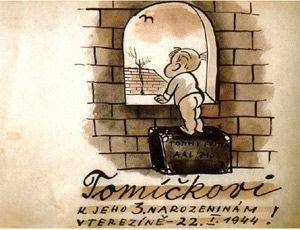
This is a marvelous unit to introduce the youngest students to the idea of the ghetto.
Tommy is an album of pictures drawn by the Czech artist Bedřich Fritta as a present for his son on his third birthday. He wanted to teach his son about all the things in a normal world, such as trees, parks, birds, and flowers – for the day in the future when he hoped Tommy would face a better life.
2nd: My Doll
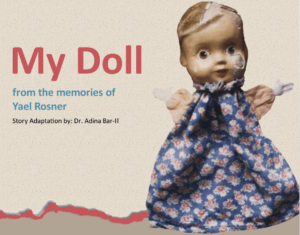 My Doll is the memoir of Yael Rosner, adapted especially for younger children. The book focuses on the subjects of struggle, survival, and revival. This story particularly emphasizes the significance of imagination and creativity inherent in the process of hiding and coping as a child during the Holocaust.
My Doll is the memoir of Yael Rosner, adapted especially for younger children. The book focuses on the subjects of struggle, survival, and revival. This story particularly emphasizes the significance of imagination and creativity inherent in the process of hiding and coping as a child during the Holocaust.
The story shows students the everyday experiences of a girl who is confined to a cellar hiding from the German soldiers. She copes with the situation with the help of improvised toys, her imagination, and the warmth and love of her mother.
This unit is entirely online:
An online version of My Doll
An in-depth teacher’s guide
3rd: I Wanted to Fly Like a Butterfly
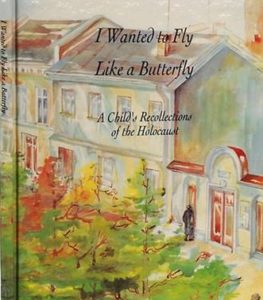 I Wanted to Fly Like a Butterfly is a tender account of the Holocaust through the eyes of a young survivor, and is aimed at grades 3-4. Hanna Gofrit recalls her childhood in Poland and tells how her life dramatically changed when the Nazi soldiers occupied her country. Hanna lived to tell the story thanks to a brave Polish family who sheltered Hanna and her mother for two years until the end of the war.
I Wanted to Fly Like a Butterfly is a tender account of the Holocaust through the eyes of a young survivor, and is aimed at grades 3-4. Hanna Gofrit recalls her childhood in Poland and tells how her life dramatically changed when the Nazi soldiers occupied her country. Hanna lived to tell the story thanks to a brave Polish family who sheltered Hanna and her mother for two years until the end of the war.
The book itself is designed with color-coded pages to help teachers focus on a variety of concepts. You can decide which units within the book you want to focus on, which you want to read but not comment on, and which can be skipped. Important note: Although the book presents Hanna’s life starting at a young age, we recommend you start with the final pages, which discuss Hanna as an adult in Israel. This allows the students to follow the story without worrying about whether Hanna will survive.
In-depth teacher’s guide (from Yad Vashem).
Lesson plan for I Wanted to Fly Like a Butterfly (PDF)
The third grade teacher at one congregation had her students make a megillah out of this book. Read her description here.
4th or 5th: Children in the Ghetto
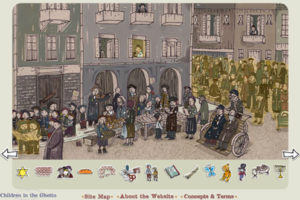 Children in the Ghetto is an interactive website written for children. It portrays life during the Holocaust from the viewpoint of children who lived in the ghetto. At the same time, it attempts to make the complex experience of life in the ghetto as accessible as possible to today’s children.
Children in the Ghetto is an interactive website written for children. It portrays life during the Holocaust from the viewpoint of children who lived in the ghetto. At the same time, it attempts to make the complex experience of life in the ghetto as accessible as possible to today’s children.
Along with the description of the hardships of ghetto life, the website presents the courage, steadfastness, and creativity involved in the children’s lives. One of the most important messages to be learned is that despite the hardships, there were those who struggled to care for one another and to continue a cultural and spiritual life.
At the center of this site is an imaginary representation of a street in the ghetto. The site invites children to “move around the street” and “enter” various locations in it. In each of the locations, original exhibits such as video testimonies, photographs, paintings, and artifacts are accompanied by interactive activities.
You can find the following at the Children in the Ghetto website:
Note that you have to allow Flash Player in order for the street to work.
Overview lesson plan for Children in the Ghetto (PDF).
4th or 5th: Circles
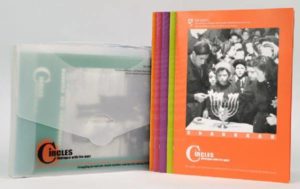 Circles is a teaching unit designed for middle school students, focusing on topics that reflect Jewish observance during the Holocaust. The curriculum discusses Jewish religious traditions and how Jews struggled to maintain their customs during the Holocaust. The following topics are covered:Tu B’Shvat, Chanukah, Purim, Passover, Bar/Bat Mitzvah, Brit Milah, Prayer, Shabbat, and Kaddish and Commemoration. Each topic has a booklet with quotes and suggested discussions. Choose topics based on the interest and maturity level of your students.
Circles is a teaching unit designed for middle school students, focusing on topics that reflect Jewish observance during the Holocaust. The curriculum discusses Jewish religious traditions and how Jews struggled to maintain their customs during the Holocaust. The following topics are covered:Tu B’Shvat, Chanukah, Purim, Passover, Bar/Bat Mitzvah, Brit Milah, Prayer, Shabbat, and Kaddish and Commemoration. Each topic has a booklet with quotes and suggested discussions. Choose topics based on the interest and maturity level of your students.
Circles can be nicely woven into the ISJL 4th grade curriculum, which focuses on holidays.
Lesson plan for Circles (PDF).
6th or 7th: Responsa from the Kovno Ghetto
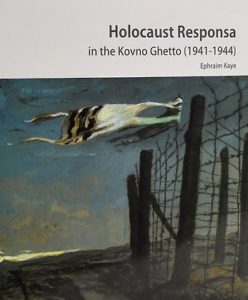 Responsa from the Kovno Ghetto is a resource highlighting issues of Jewish religious law that arose in the ghetto in Kovno, Lithuania, an ancient center of Jewish learning. Amidst the terror and persecution, and in the abnormal conditions of the ghetto, the Jews could no longer adhere to their customs and mitzvot. This guide outlines how rabbis were called upon to answer numerous issues of Jewish law and grapple with ethical dilemmas. The responsa (rabbinic discussions of questions) in this book can lead to fascinating discussions about how best to answer these questions. Be sure to note the alternative answers to some of the questions presented in the book’s footnotes.
Responsa from the Kovno Ghetto is a resource highlighting issues of Jewish religious law that arose in the ghetto in Kovno, Lithuania, an ancient center of Jewish learning. Amidst the terror and persecution, and in the abnormal conditions of the ghetto, the Jews could no longer adhere to their customs and mitzvot. This guide outlines how rabbis were called upon to answer numerous issues of Jewish law and grapple with ethical dilemmas. The responsa (rabbinic discussions of questions) in this book can lead to fascinating discussions about how best to answer these questions. Be sure to note the alternative answers to some of the questions presented in the book’s footnotes.
This is a particularly good complement to the ISJL 6th grade curriculum.
Lesson plan for Responsa from the Kovno Ghetto (PDF).
6th or 7th: Through Our Eyes & Return to Life
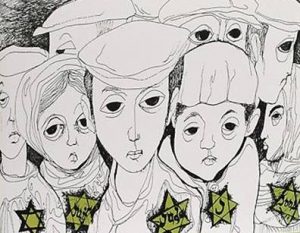 Through Our Eyes contains a collection of excerpts from Jewish children’s diaries and Holocaust survivor testimonies. This book provides a chronological overview and highlights the perceptions of children from before the war through its aftermath. Through poetry, diaries and testimonies, Through Our Eyes reveals the thoughts and feelings of children and teenagers confronted by death and destruction. The book gives an insight into the world of the children who lived during the wartime period who were approximately the same age as the readers themselves.
Through Our Eyes contains a collection of excerpts from Jewish children’s diaries and Holocaust survivor testimonies. This book provides a chronological overview and highlights the perceptions of children from before the war through its aftermath. Through poetry, diaries and testimonies, Through Our Eyes reveals the thoughts and feelings of children and teenagers confronted by death and destruction. The book gives an insight into the world of the children who lived during the wartime period who were approximately the same age as the readers themselves.
At Congregation Kol Ami, we use this in our 6th grade class in conjunction with Return to Life, a kit focused on the time directly after the war ended. The Return to Life kit comes with posters, a teacher’s guide, and a 60 minute video. We use this because although Though Our Eyes has a small section on the period after the war, we found it insufficient for the purpose. Consider using the Return to Life unit to teach this essential part of the story and as a complement to Through Our Eyes.
Lesson plan for Through Our Eyes and Return to Life (PDF)
8th: The Daughter We Had Always Wanted
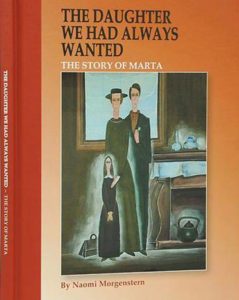 The Daughter We Had Always Wanted is the story of Marta, a young Jewish child who lived in Czortkow, Poland. At the age of eight, Marta was sent by her mother to live under an assumed identity with a non-Jewish family in Warsaw who risked their lives to protect her. After the Holocaust, Marta immigrated to Israel and began to rebuild her life despite various hardships. Today, Marta Goren is a great-grandmother who lives in Rehovot, Israel. In this age-appropriate memoir, Marta recalls her childhood experiences before, during, and after the Holocaust. Marta includes her address in the memoir and encourages students to write to her. You can take advantage of this as an extension activity for this book.
The Daughter We Had Always Wanted is the story of Marta, a young Jewish child who lived in Czortkow, Poland. At the age of eight, Marta was sent by her mother to live under an assumed identity with a non-Jewish family in Warsaw who risked their lives to protect her. After the Holocaust, Marta immigrated to Israel and began to rebuild her life despite various hardships. Today, Marta Goren is a great-grandmother who lives in Rehovot, Israel. In this age-appropriate memoir, Marta recalls her childhood experiences before, during, and after the Holocaust. Marta includes her address in the memoir and encourages students to write to her. You can take advantage of this as an extension activity for this book.
This story opens the idea of children in hiding and the difficulties of living under an assumed identity. When the war ends, Marta finds it difficult to return to her old identity. For older students, these pages could lead to an interesting discussion of their Jewish identity and how they feel about it. In addition, this book includes stories of the hardships experienced by non-Jews in Poland, which could open an interesting discussion about non-Jewish victims of the Holocaust, an important addition at this age.
This book can add depth and discussion to the in-depth ISJL 8th grade Holocaust curriculum.
K to 2nd: Say Something
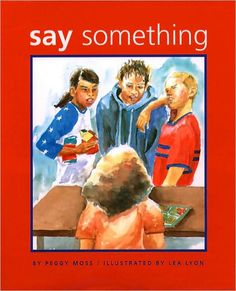
For the youngest students, we at Congregation Kol Ami developed a program addressing the issue of bullying. Based on the children’s book Say Something, this lesson is designed to help students develop skills to cope with bullying and to become people who take a stand against bullying. As part of the lesson, we state that long ago, in another country, there were people who bullied us because we were Jews. They did not want us to grow or be successful, but we did! As a tangible expression of that, the students write the names of their living relatives on construction paper and make a chain of the names, which we display in the hallway.
Lesson plan for Say Something (PDF)
3rd to 5th: Keeping the Memory Alive poster session
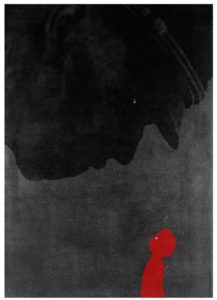 For grades 3 to 5, we have used Yad Vashem’s Keeping the Memory Alive posters as a Yom HaShoah program to wrap up the Holocaust educational unit. For several years, Yad Vashem has hosted a poster contest for their Holocaust Memorial Day celebration. The posters submitted to this contest are fascinating in the various ways they present the issues and depth of the Holocaust.
For grades 3 to 5, we have used Yad Vashem’s Keeping the Memory Alive posters as a Yom HaShoah program to wrap up the Holocaust educational unit. For several years, Yad Vashem has hosted a poster contest for their Holocaust Memorial Day celebration. The posters submitted to this contest are fascinating in the various ways they present the issues and depth of the Holocaust.
For Yom HaShoah, we lay out the posters and allow the students to walk around and look at them. Then we have them describe their responses to each other. We then discuss some of the lessons we hoped they would learn from the unit, including the recognition that although this terrible thing happened, we survived as a Jewish people. You will want to pick and choose which posters you lay out depending on the age and maturity of your students.
(Note the multiple ways to look at the poster presented here: focusing on the black, you see a Nazi soldier looking down at the child; focusing on the grey, you see the child looking up at the Jerusalem skyline. This poster beautifully represents the dual nature of our message.)
Lesson plan for Keeping the Memory Alive (PDF).
6th to 12th: Light from the Darkness
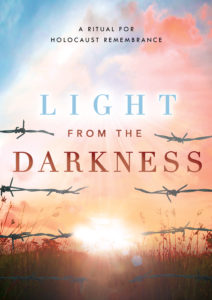 As the fragile window of witness closes, here is a new way to commemorate the Holocaust.
As the fragile window of witness closes, here is a new way to commemorate the Holocaust.
Light from the Darkness does the things the survivors have always asked of us: to tell the story, remember, and learn the lessons. This short and empowering guided experience is filled with song, story, ritual, and remembrance, drawing strength from darkness and turning it into action.
In Light from the Darkness, the lessons of the Holocaust reinforce the core values of Judaism: remember the evil that we have experienced and make sure that no one ever has to experience such evil again, but always celebrate life and your Jewish faith.
Light from the Darkness makes a wonderful middle and high school program, whether led by teachers or by teens. It also makes a wonderful community-wide event. Leader’s guide and suggested discussion questions are included.
Enduring Understandings:
By engaging with individual stories of the Holocaust, students develop the tools to be able to integrate these into their own Jewish story and thus keep the memory alive.
Study of the Holocaust provides a context for exploring the dangers of remaining silent and indifferent in the face of injustice and the importance of being an Upstander.
Essential Questions:
How is this story part of my story?
What is my responsibility as keeper of the story?
Teaching without Trauma
Our main goal is to help our students find the meaning and lessons that we can learn from this history.
Our goal is not to traumatize our students.
Horrific stories and pictures of emaciated bodies cause students to shut down. Distraught students do not ask, “Why did this happen?” They ask, “Why do I have to learn this?” If we want our students to learn, we do not want to make them cry.
To teach the Holocaust without traumatizing your students, we teach it
- Thematically, with historical context, focusing on literature, art, music, religion, and spiritual resistance
- Starting at a young age, but in an age-appropriate way designed to allow students to engage with the material
- Through stories of individuals, not focused on numbers
- Through the voices of our ancestors, not the perpetrators
- In context of the periods before, during, and after the war
By teaching in this manner, we can focus on
- Teaching empathy (understanding how those involved felt without putting ourselves in their shoes, which can be upsetting)
- Understanding how people reacted to their situations and why
- Understanding how we can incorporate this story into our lives without allowing it to take over our lives.
Follow Us on Facebook & YouTube
© 2020 All rights reserved
